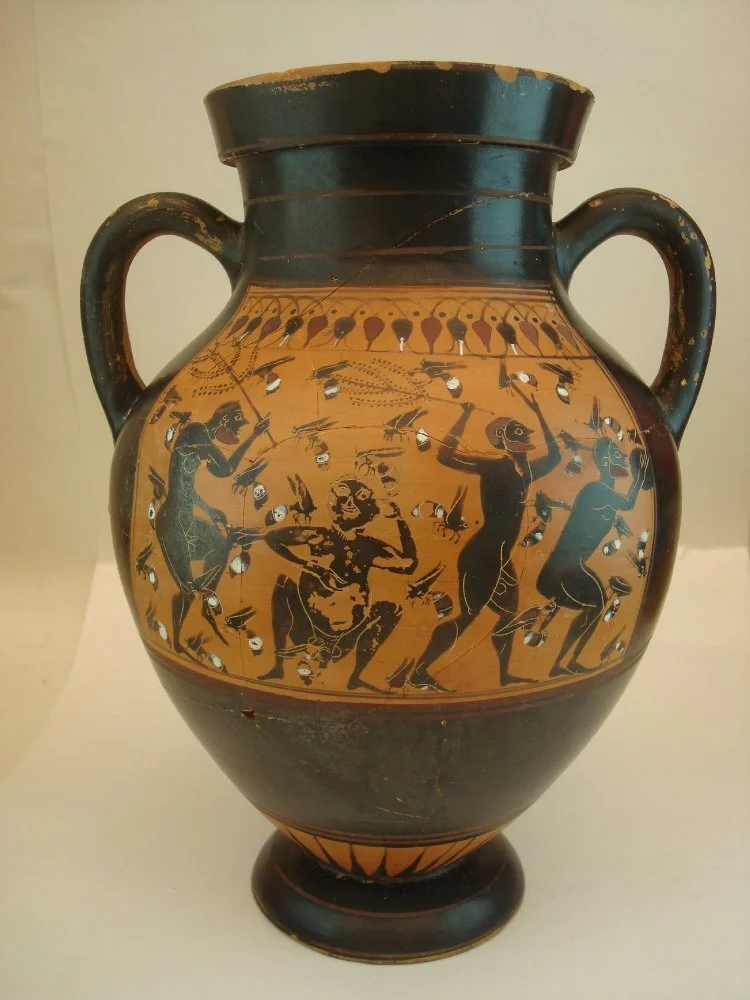I’ve written quite a bit about the PGM, clearly it composed an important element of my magical and spiritual practice. Yet despite having worked very closely with some Graeco-Egyptian spirits, I do not strongly identify with either Greek or Egyptian “religion.” So why do I place such high value on the PGM?
PGM IV. 2708-2784: Invocation of Hekate
Maskelli Maskello
The Maskelli Maskello formula is one of the most common magical incantations of the ancient world. We find it in love spells, coercion spells, curses and invocations, it can stand on its own as well as be mixed into other strings of voce magicae. The widespread use of the formula within the magical papyri and on other magical material (curse tablets, etc.) speak to a very ancient point of origin.
Hekate in the PGM
Few deities have forged the intimate link with magicians, witches and magical practitioners that Hekate has in her various manifestations. As the bonafide patroness of magic and witchcraft and goddess of liminality, Hekate has represented and embodied the sacred mysteries and arcane arts for millennia.
PGM IV. 154-285: Lecanomancy
The term ‘Bowl Divination’ as the translation of the Greek λεκανομαντεία (lekanomanteia, ‘lecanomancy’) fails to capture the full intent, power and purpose of the practice. Indeed, the scribe here presents a rite in which a specific god or spirit of the dead is actively called forth as opposed to the passive act of divination.
PGM IV 154- 285: Attachment Ritual
PGM IV. 154-285: Invocation of Typhon
PGM IV 154-285: Phylactery of 100 Letters
PGM IV 154-285: A Magical System
This is the first post, on a series of posts I intend to make on PGM IV 154-285, "Nephotes to Psammetichos letter concerning bowl divination." The intent here is to introduce the passage and discus it as a complete and workable system of magical practices. Future posts will delve deeper into the individual rituals of the passage and document my personal progress.
Vowel Sounds in the PGM
The pronunciation of the divine names, nomina barbara, or voce magicae of western ritual magic can be a hotly debated subject. Many will argue that proper pronunciation of these magical formulae is not critical and that it is the intent behind the word that empowers the rite. Indeed, the power of intent is indisputable; however, there is also the essential vibrational quality of sound that I believe is as important as the intent, if not more.
Aberamenthô in the PGM
This post, as many do, began as a series of notes regarding the use of the magic name Αβεραμενθω (“Aberamenthô”) in the PGM. I was surprised to discover that references to this name appear outside the PGM as well. In the gnostic manuscript Pistis Sophia and the untitled work in the Askew Codex, Aberamenthô is used as an epithet of Jesus when performing miracles.
Black of Isis
The Black of Isis is a magical cloth mentioned in two rituals of initiation and three oracular spells in the PGM. It is generally understood to be a linen cloak (or piece, thereof) used to dress the effigies of the goddess. Our goal in this post is to better understand the use and significance of this Black of Isis in the PGM and within the magical traditions of the Graeco-Egyptian world. We will examine the goddess herself, the spells in the PGM that employ this magical linen, and the ritual use of such linens in the traditions dedicated to the mysteries of Isis.
Countermovement in Graeco-Egyptian Magic
The rituals and spells of the Graeco-Egyptian traditions as preserved in the PGM suggest that these magicians did not follow such “sunwise” traditions. This may comes a surprise to those of us familiar with the 19th Century Hermetic lodge magic that adopted northern practices alongside the symbols and namesake of the Graeco-Egyptian magicians.














